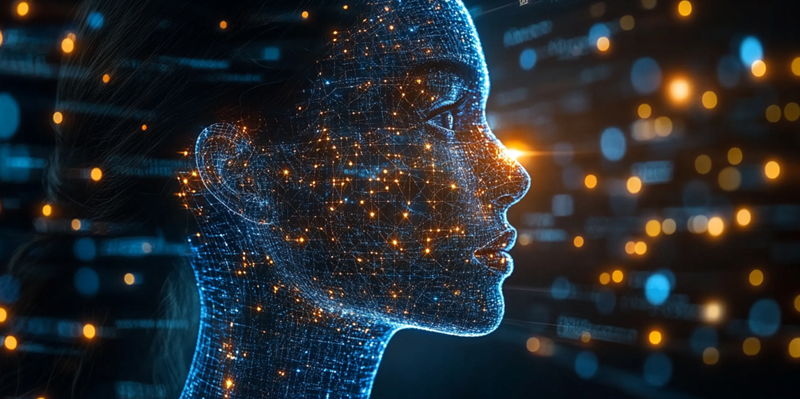In today’s fast-paced digital landscape, content strategy is evolving rapidly, with artificial intelligence (AI) playing an increasingly significant role. As technology continues to advance, it’s becoming clearer that AI can offer significant benefits in streamlining and optimizing content creation processes. However, the human touch remains indispensable in creating engaging, personalized content that truly resonates with audiences. This article explores how AI and human creativity can coexist harmoniously in a content strategy, leveraging technology to optimize processes while maintaining the quality and personal connection that only humans can provide.
The Role of AI in Content Creation
AI has revolutionized content creation by offering tools that generate topics and outlines, significantly reducing the time and effort required. Tools like OpenAI’s ChatGPT and HubSpot’s Blog Ideas Generator can spark creativity and provide a solid foundation for content creators. These AI tools help overcome creative blocks and streamline the ideation process, allowing writers to focus on crafting high-quality content. By automating the more repetitive aspects of content creation, such as idea generation, AI enables content creators to allocate more energy to refining their message and connecting with their audience on a deeper level.
While AI can efficiently generate content ideas, it is crucial to prioritize quality over quantity. Content creators should use AI-generated ideas as a starting point, ensuring that the final output reflects their unique voice and insights. This balance ensures that the content remains engaging and relevant to the audience. Despite AI’s capabilities to generate large volumes of content, it cannot replicate the nuanced understanding and empathy that humans bring to the table. As such, human oversight is essential to ensure that AI-generated content aligns with the brand’s tone and message.
Enhancing Audience Segmentation with AI
Effective content strategy relies heavily on understanding the audience, and AI-driven insights can significantly enhance this process. Tools like Google Analytics and Semrush provide valuable data on traffic sources, engagement metrics, and audience behavior. By analyzing this data, content creators can identify what resonates with their audience and tailor their content accordingly. AI algorithms can sift through vast amounts of data to uncover patterns and trends that might be missed by human analysts, leading to a more precise understanding of audience preferences and behaviors.
However, data alone is not enough. Combining AI-driven insights with human intuition and experience leads to more accurate audience segmentation and personalized content experiences. This synergy ensures that content strategies are data-informed but still retain the human touch that makes them compelling and relatable. While AI can pinpoint the ‘what’ and ‘how’ of audience behavior, humans are better suited to understanding the ‘why,’ and this deeper comprehension is crucial for crafting content that truly resonates. It’s this blend of data analytics and human insight that enables content creators to deliver highly personalized and engaging experiences.
Optimizing Content Calendars with AI
A well-planned content calendar is essential for an effective content strategy, helping ensure content is consistently delivered at optimal times. AI tools like Buffer assist in scheduling posts and coordinating them with other content formats such as blogs and landing pages. These tools streamline the publishing process, enabling content teams to maintain a steady flow of engaging material without feeling overwhelmed. By automating the scheduling of content, AI allows content creators to focus on developing high-quality content rather than getting bogged down by logistical details.
Despite the efficiency AI brings to content scheduling, human oversight remains vital. Content creators must oversee schedules to avoid potential errors and ensure flexibility for last-minute changes. This human touch ensures that content remains timely and relevant, maintaining audience engagement without overwhelming them. AI can predict the best times to publish content based on historical data and engagement trends, but humans are needed to make judgment calls and adaptations based on current events or shifts in audience sentiment. A rigid, purely AI-driven schedule could miss these nuances and fail to capitalize on timely engagement opportunities.
Balancing Automation and Human Oversight
Beyond topic generation and scheduling, AI can enhance efficiency in areas like keyword research, proofreading, and task management. However, human oversight is indispensable to ensure that the content aligns with the team’s original intent and maintains a personalized touch. This balance between automation and human input is crucial for developing a well-rounded content strategy. For instance, AI can quickly identify trending keywords and suggest relevant hashtags, but a human touch is necessary to ensure these elements are seamlessly integrated into the content in a way that feels natural and authentic.
A survey by HubSpot in 2022 revealed that content marketers spend significant amounts on content creation, emphasizing the need for a return on investment (ROI). While automation offers appealing shortcuts, the risk lies in generating outcomes that deviate from the desired quality and intent. Integrating human insights with AI-driven data is essential for capturing, engaging, and growing audiences effectively. No matter how advanced AI tools become, the final touch and approval from a human content creator remain necessary to ensure that content not only meets quality standards but also resonates emotionally with the audience.
Leveraging AI for Efficiency While Maintaining Quality
In today’s dynamic digital environment, the content strategy landscape is rapidly transforming, with artificial intelligence (AI) increasingly taking center stage. As technology continues to progress, it’s evident that AI offers substantial benefits for streamlining and enhancing the content creation process. AI can handle data analysis, generate ideas, and even draft content, making it a powerful tool for efficiency. However, the human touch remains crucial for crafting engaging, personalized content that truly connects with audiences on an emotional level. Creative human input ensures that content is not only informative but also engaging and authentic. This article delves into the synergy between AI and human creativity within content strategy, showing how leveraging technology can optimize processes while preserving the quality and personal connection that only humans can provide. Integrating AI with human insights can lead to a well-rounded strategy that maximizes efficiency without sacrificing engagement and authenticity, creating content that resonates deeply with audiences.

